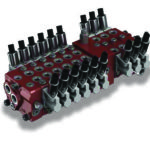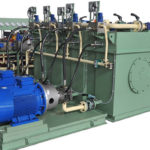Contributed by Josh Cosford
Although any “bang-bang” valve is one where the valve shifts between two discreet positions, either open or closed, it can also apply to valves with three positions, such as with a 4/3 solenoid operated directional valve. But there are occasions where a true On/Off valve provides the best solutions to a problem.

The process industry uses the term “On/Off” to describe a gate, ball or butterfly valve simply meant to open or close a flow path. For fluid power systems, the 2/2 nomenclature is more common, which describes a 2-way, 2-position valve, although the method of operation isn’t specified.
From a mechanical standpoint, the most effective 2/2 valves use a poppet design to provide low leakage sealing over a wide pressure range and are simple to manufacture. Spool valves provide smooth response but are superior in applications where metering or partial flow is required, such as with a proportional valve. However, spool valves by their nature are more prone to leakage, since the clearance between the spool and body must be sufficient to allow smooth movement.
A 2-way, 2-position valve has many uses in hydraulic circuits, but one of the more common application is an electric unloading valve. For hydraulic systems running via a fixed flow pump, you can take advantage of closed-center hydraulic circuits. A normally open 2/2 valve teed off the pump acts as a dump valve when downstream valves are closed center, such as would be used with a pressure compensated pump.
Even if the fixed pump and dump valve combination isn’t replacing a variable pump, it allows you to use closed center valves, which flow better than tandem center valves which flow in series from pressure to tank in neutral. The pressure drop of a tandem center valve is cumulative with the number of valves in series, increasing pressure drop through each valve. The dump valve and fixed pump combination can save thousands over a variable displacement pump, making it a suitable alternative.
Dump valves can be used for safety applications in various locations as well. Accumulator safety blocks will use a 2/2 normally open valve to dump accumulator energy to tank in case of electrical power loss. Stored hydraulic energy can be dangerous, especially if technicians are unaware of it. Dump valves are also employed on hydraulic press safety circuits in a similar fashion. A normally open dump valve will be plumbed in parallel with the cap port of a press cylinder to dump pressure to tank in case of emergency, preventing the possibility of unintentional downward movement of the press under power.
For any application requiring a rapid switch between closed and flowing, an On/Off valve is ideal. They can be mounted onto or within manifold blocks or manufactured within an inline body of various sizes and flow rates.






